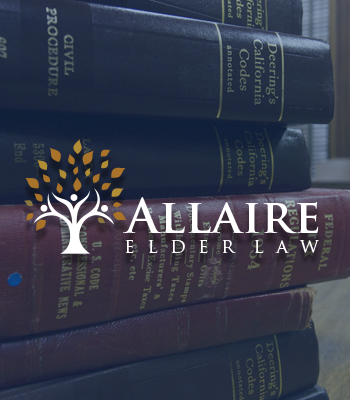Estates and Probate
When someone passes on, the family is often at a loss of what to do. Here is an outline and some tips to help guide the way after the funeral is done and the funeral director has obtained death certificates from the town.
It is necessary to pull together two lists of all the assets. One list is assets owned solely by the deceased, without a joint owner or a beneficiary. The other list is property owned jointly with right of survivorship or that has a beneficiary named. Property automatically going to others does not go through probate, but is part of what is called the taxable estate. The word taxable raises everyone’s blood pressure, but the good news is the Connecticut inheritance tax exemption is $5.1 million in 2020, and the Federal is $11.2 million, so for all but the very wealthy, there is no inheritance tax.
If there was a joint survivor owner, or a beneficiary named, on a car, or home or bank account, it is automatically owned by the survivor and does not go through probate. But all assets must be listed on an inheritance tax return, even if they do not go through probate. There is a probate fee on the total value shown on the tax return. The return must be filed and if the deceased owned real estate, a certificate of no tax is filed on the land records showing no tax is due. Real Estate cannot be sold without a certificate of no tax as a buyer or bank will want to get clear title if the property is sold or mortgaged.
If the total assets that go through probate are less than $40,000 there is a shorter probate procedure, called an Affidavit in Lieu of Administration. It lists the assets, the debts and where the property goes, and a full estate does not have to be opened. Instead, after reviewing the papers filed, the court orders the property be distributed to the rightful heirs without doing a full probate estate. The tax return must still be filed and there is a probate fee, but the process is easier and faster than a full estate.
If full probate is required with countable assets over $40,000, then the heirs must apply to probate to have the will admitted and an executor appointed to handle the estate. If there is no will a similar application is made to open the estate and appoint an Administrator to handle the estate.
Whoever is Executor or Administrator must make a list of all assets that go through probate, called an inventory which is due 60 days after the executor is appointed. Also a list of all debts must be filed, called a return and list of claims. The inheritance tax return is due six months from the date of death. The return and list of claims is due 150 days after the Executor is appointed. Creditors can make claims up to 150 days after the Executor is appointed.
After this is done the Executor prepares a final accounting showing all the assets on the inventory, all the debts and costs of the estate paid, and the balance to be given to heirs. Normally this is very straightforward, and all the heirs sign a waiver and it is automatically approved. The Executor sends everyone their share and the probate is finished. If preplanning is done with appropriate trusts, or beneficiaries designated, probate can often be avoided, but the probate fee is the same regardless. There is one potentially big benefit for anyone who does own real estate or stocks and that is called a step up in tax basis. That means the IRS and Connecticut Revenue Services treats the property as if the heirs bought it at the date of death value shown on the tax return, so when they sell that property, there will not be capital gains tax on the amount shown on the inheritance tax return. So, if stock was bought for $10 per share by the deceased, and is worth $30 a share at death, there will not be a tax on the $20 gain.
Debts must also be listed on a Return and List of Claims so that the legitimate creditors will be paid from the estate. If there is not enough money to pay the debts, each creditor will get paid a fractional share based on what percentage of the total debt they are owed. So, if there were three creditors, and one had 50%, one 30% and one 20% of the debt, and only $1000 was available the 50% creditor would get $500, the 30% creditor would get $300 and so on.
This is a bare bones outline, and is no substitute for getting thorough advice, but it should be helpful.
It is necessary to pull together two lists of all the assets. One list is assets owned solely by the deceased, without a joint owner or a beneficiary. The other list is property owned jointly with right of survivorship or that has a beneficiary named. Property automatically going to others does not go through probate, but is part of what is called the taxable estate. The word taxable raises everyone’s blood pressure, but the good news is the Connecticut inheritance tax exemption is $5.1 million in 2020, and the Federal is $11.2 million, so for all but the very wealthy, there is no inheritance tax.
If there was a joint survivor owner, or a beneficiary named, on a car, or home or bank account, it is automatically owned by the survivor and does not go through probate. But all assets must be listed on an inheritance tax return, even if they do not go through probate. There is a probate fee on the total value shown on the tax return. The return must be filed and if the deceased owned real estate, a certificate of no tax is filed on the land records showing no tax is due. Real Estate cannot be sold without a certificate of no tax as a buyer or bank will want to get clear title if the property is sold or mortgaged.
If the total assets that go through probate are less than $40,000 there is a shorter probate procedure, called an Affidavit in Lieu of Administration. It lists the assets, the debts and where the property goes, and a full estate does not have to be opened. Instead, after reviewing the papers filed, the court orders the property be distributed to the rightful heirs without doing a full probate estate. The tax return must still be filed and there is a probate fee, but the process is easier and faster than a full estate.
If full probate is required with countable assets over $40,000, then the heirs must apply to probate to have the will admitted and an executor appointed to handle the estate. If there is no will a similar application is made to open the estate and appoint an Administrator to handle the estate.
Whoever is Executor or Administrator must make a list of all assets that go through probate, called an inventory which is due 60 days after the executor is appointed. Also a list of all debts must be filed, called a return and list of claims. The inheritance tax return is due six months from the date of death. The return and list of claims is due 150 days after the Executor is appointed. Creditors can make claims up to 150 days after the Executor is appointed.
After this is done the Executor prepares a final accounting showing all the assets on the inventory, all the debts and costs of the estate paid, and the balance to be given to heirs. Normally this is very straightforward, and all the heirs sign a waiver and it is automatically approved. The Executor sends everyone their share and the probate is finished. If preplanning is done with appropriate trusts, or beneficiaries designated, probate can often be avoided, but the probate fee is the same regardless. There is one potentially big benefit for anyone who does own real estate or stocks and that is called a step up in tax basis. That means the IRS and Connecticut Revenue Services treats the property as if the heirs bought it at the date of death value shown on the tax return, so when they sell that property, there will not be capital gains tax on the amount shown on the inheritance tax return. So, if stock was bought for $10 per share by the deceased, and is worth $30 a share at death, there will not be a tax on the $20 gain.
Debts must also be listed on a Return and List of Claims so that the legitimate creditors will be paid from the estate. If there is not enough money to pay the debts, each creditor will get paid a fractional share based on what percentage of the total debt they are owed. So, if there were three creditors, and one had 50%, one 30% and one 20% of the debt, and only $1000 was available the 50% creditor would get $500, the 30% creditor would get $300 and so on.
This is a bare bones outline, and is no substitute for getting thorough advice, but it should be helpful.
Attorneys Halley C. Allaire and Stephen O. Allaire (Retired) are partners in the law firm of Allaire Elder Law.
Attorneys Stephen O. Allaire (Of Counsel) and Halley C. Allaire are members of the National Academy of Elder Law. Attorneys, Inc.
Allaire Elder Law is a highly respected, and highly rated law firm with offices in Bristol, CT.
We can be contacted by phone at (860) 259-1500 or by email.
If you have a question, send a written note to us and we may use your question in a future column.

Elder Law Articles
Connect
Newsletter
Subscribe to our newsletter to get the latest
legal news on Elder Law in Connecticut.
legal news on Elder Law in Connecticut.







